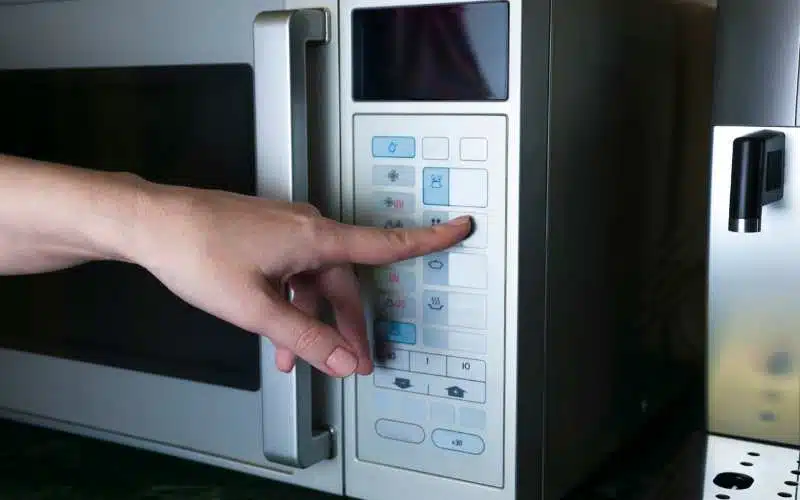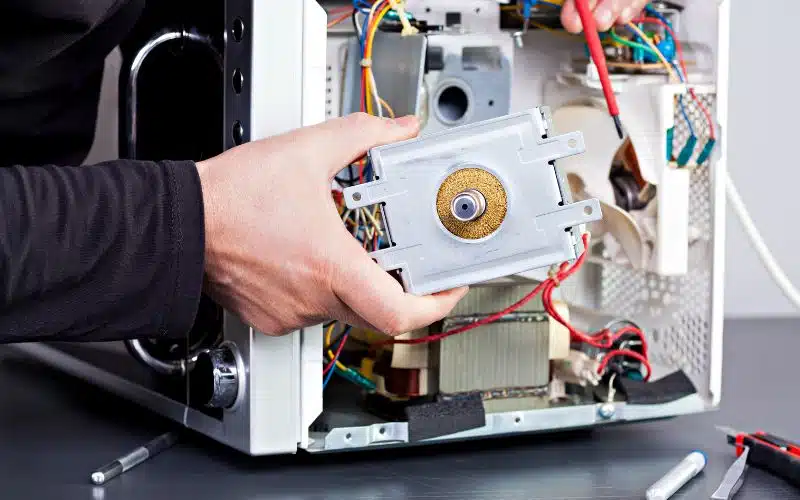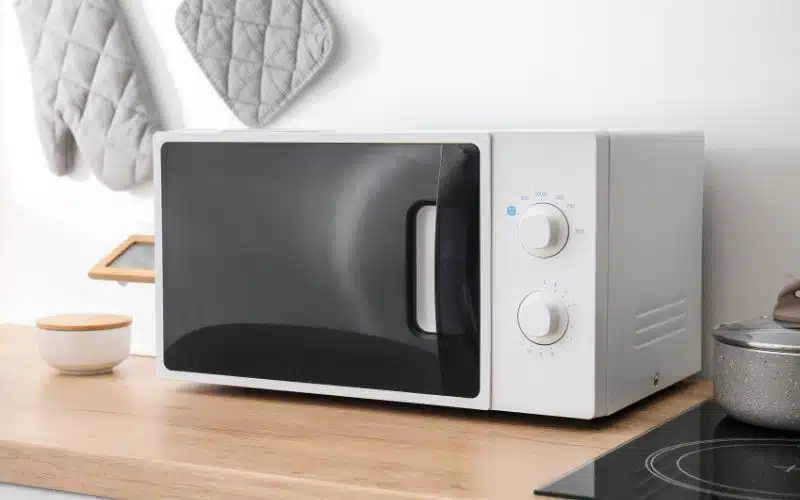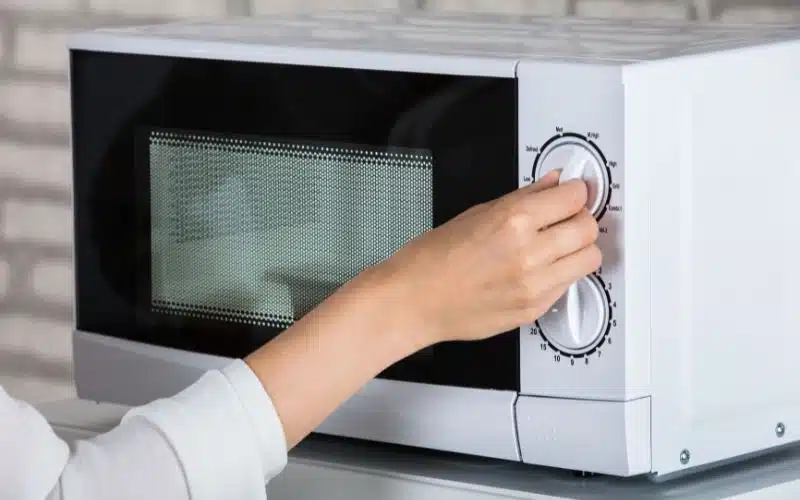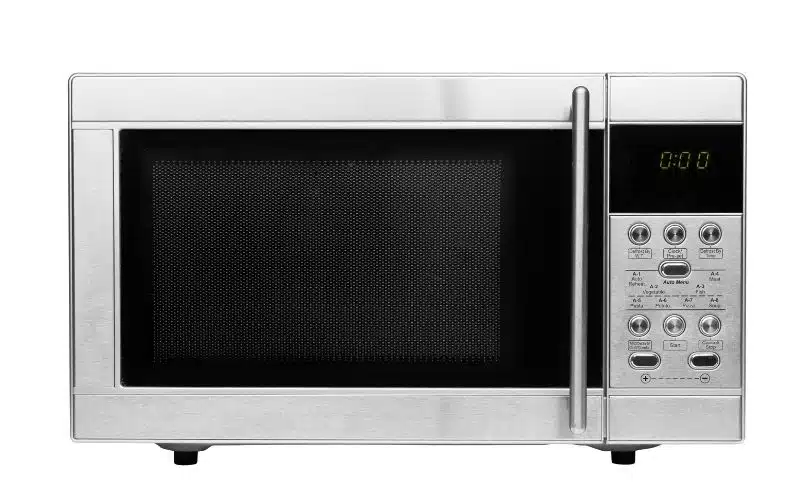If you are conversant with the use of a microwave, then you will be aware of the importance of the Waveguide to the operation of the device.
What transpires, however, if you unintentionally lose or damage this component? A big question will be: Is the microwave still functional without its Waveguide?
You can use a microwave oven without a waveguide, but you should consider getting a new one before using the oven further. Using a microwave with a damaged waveguide might significantly harm the microwave oven’s magnetron and other internal circuits.
In this article, we will discuss a waveguide, its importance in a microwave oven, how it can get damaged, and some other things concerning it.
Can I Use a Microwave Without the Waveguide Cover?

A good explanation for this question is using a cooking pot, for example. You will see that you can cook rice in a pot even without the pot cover.
Unfortunately, this will, in turn, leave a mess in the kitchen and on any appliance you use in cooking the rice. Be it a gas cooker, a stove, an electric cooker, e.t.c.
The liquid spilling out of the pot while the food is boiling might cause your cooker to develop a fault.
This scenario is similar to the microwave. The microwave waveguide cover doesn’t impact the microwave’s performance.
Without the waveguide cover, the microwave can still work perfectly. But the wrong side to this action is that the internal parts of the microwave will gradually get damaged.
A waveguide cover’s purpose is to shield the oven from steam and vaporized food particles that can build up inside the electronic parts of the range.
If food particles get within the circuit board of the microwave, the microwave will lose power gradually and stop working. Sometimes the microwave will even short out or deteriorate.
A Waveguide is designed to send waves directly to the food in the microwave. And hence, the waveguide cover helps the Waveguide to archive this function at its end.
Even without a waveguide cover, the microwave will still function well, but a little problem will be that the waves within the microwave will no longer be in a uniform direction.
The waves will be scattered, which can affect the microwave oven itself.
What Does the Waveguide Do on Microwave?
Understanding a waveguide starts with knowing what a waveguide is. In simple terms, just as the word implies, a “waveguide .”
A waveguide acts as a channel or path for the motion and direction of waves. The Waveguide is a unique transmission line consisting of a hollow metal tube.
Since high-frequency signals cannot travel over extended distances without degrading, microwaves comprise a section known as a Waveguide.
It serves as a part of the Microwave transmission line. A wave passing through space would have the same impedance as a wave in the microwave oven.
Hence, the transmitter dimensions are required to match the wavelength/frequency exactly.
If the Waveguide is too tiny, a body will absorb it instead of propagating. And if the Waveguide is too large, there will be too many spreading modes.
To prevent loss and leakage at junctions, the Waveguide’s inner and mating surfaces must be very close to entirely conducting as is humanly possible.
Hence The most effective and secure method of transferring power to the food in a microwave is via a waveguide.
The radiation used to heat food is known as a microwave. In domestic appliances, this radiation has a frequency of 2.45 GHz.
The magnetron produces this microwave energy. When you put food in the microwave oven, the Waveguide transmits the waves to the oven cavity.
Electronics are required To power the magnetron and regulate the entire system.
Microwaves have a lot of power. Some produce up to 1.3 kW, comparable to the 1.5 kW of a standard residential space heater.
Power transmission must therefore be compelling and leak-proof. Hence the aim is to cook the food and not burn the device; the wave transport has to be effective and leak-proof.
It would be best if you had an effective channel to avoid hurting yourself or having other silly accidents. And as a matter of fact, Waveguides are the Best option here.
Waveguides are best because wires will not be effective; hence a lot of power will escape. Coaxial cables are suitable transmitters, but in the case of a microwave oven, they need to be better.
The reason is that the center conductor within the coaxial cable is relatively thin and cannot carry the power needed without significant losses.
Waveguides, on the other hand, solve both the efficiency and leakage requirements because They are super-efficient. Contrary to coaxial cables, a waveguide has no thin center conductor.
Waveguides utilize all of the conducting surfaces inside their metal walls instead.
These metal walls also act as a shield, preventing radiation from escaping. The presence of a waveguide in a microwave oven is essential to the device.
The table below consists of the advantages and disadvantages of a waveguide.
| Advantages | Disadvantages |
|---|---|
| Waveguides are capable of handling very high power. | They are difficult to install, and they require special couplings. |
| Waveguides have a minimum insertion loss. | The Limitations of Waveguides are their physical size. |
| They offer a large bandwidth. | Waveguides are expensive. |
| They are employed in the design of Waveguide filters because of their dispersion. | Waveguides contain Weak thermal stability. |
| Waveguides are better at transmitting waves within a short distance than coaxial cables. | Implementing 3-D Waveguides is challenging. |
How Does a Waveguide Gets Damaged?
A hole in the top of a waveguide can cause damage to it. It could be a sign of severe burning and was probably brought on by arcing when electrical discharge occurs outside the circuit due to a system breakdown.
If the microwave contains food scraps and grease on the waveguide cover, it may cause sparking. The food particles that adhere to the Waveguide by the magnetron cause sparking.
The Waveguide in the microwave oven may occasionally become damaged due to the burning and sparks.
It is advisable to keep the waveguide cover clean at all times. Keeping the oven clean helps to ensure optimal microwave operation.
Keeping the waveguide cover clean also protects the Waveguide and the waveguide cover from harm.
As soon as food spills, gently wipe the surface of the cover with a soft, moist cloth to remove the food spilled.
Sparks in the oven, however, are less likely to occur if food spills are cleaned up and removed. Spatters that have accumulated could overheat and catch fire or produce smoke.
What Can I Use In Place of a Microwave Guide Cover?
The waveguide cover is fragile; you can break it by hurriedly putting meals in the oven.
The best thing to use in place of a microwave guide cover is mica. However, you can use glass, plastic, and cardboard too.
When using plastic and cardboard, All you have to do is get the material. And using a pair of scissors, carefully cut the fabric to fit the shape of the waveguide cover.
You can Make two while cutting, just in case you need a spare later on. Place it in an envelope, tape it to the waveguide opening inside the microwave oven casing, and you will fix the problem.
In addition, you can also use The factory spare parts made for the microwave to replace the Microwave guide cover.
You have to keep in mind that microwaves have high-voltage components. You will still need specialized tools to work on a microwave, even if it is unplugged.
See an expert if you are not a certified microwave technician and need the required instruments to fix it.
Although Waveguides are expensive to replace, jeopardizing your health and safety is not worth it; hence you can find the parts easily.
Conclusion
There is no doubt a microwave can function without a waveguide. However, using the microwave while its Waveguide is damaged is not advisable.
It can cause potential damage to the appliance. If the waveguide cover gets damaged, it is vital to replace it as soon as possible.
